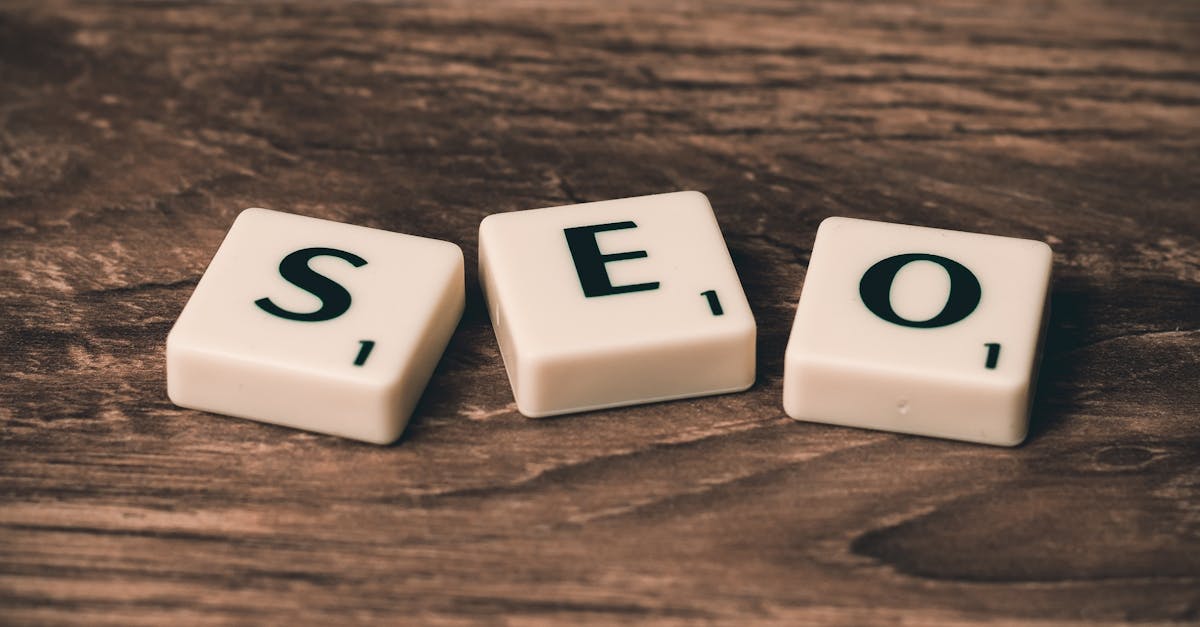
Table Of Contents
CostPerClick (CPC) Explained
Cost-Per-Click (CPC) is a fundamental aspect of Pay-Per-Click (PPC) advertising, determining how much advertisers will pay each time a user clicks on their ad. This metric serves as a benchmark for measuring the effectiveness and efficiency of online ad campaigns. Understanding CPC is essential for businesses aiming to maximise their return on investment in the competitive digital landscape.
The CPC can vary widely based on several factors, including the keywords chosen, the level of competition, and the overall strategy of the ad campaign. Advertisers need to carefully analyse their goals and budget to ensure that they select keywords that not only attract potential customers but also align with their financial objectives. By managing these elements effectively, businesses can optimise their CPC and drive more targeted traffic to their websites.
How CPC is Calculated
Cost-Per-Click (CPC) is determined by a combination of factors including the maximum bid set by advertisers, the competition for keywords, and the relevance of the ad to potential customers. When an advertiser lays down their bid within a Pay-Per-Click (PPC) Advertising campaign, they specify the highest amount they are willing to pay for each click on their ad. This bid interacts with various algorithms that assess how many other businesses are vying for the same keywords, which influences overall CPC.
The actual CPC charged may be lower than the maximum bid due to the auction system used by platforms like Google Ads. The auction considers the Quality Score of each ad, which reflects its relevance and expected performance. Advertisers benefit from a lower CPC if their ads are deemed more relevant and engaging, thereby rewarding advertisers who invest in creating high-quality, targeted campaigns within their Pay-Per-Click (PPC) Advertising efforts.
The Role of Quality Score
Quality Score plays a pivotal role in Pay-Per-Click (PPC) Advertising, as it directly influences the cost and effectiveness of campaigns. This score, assigned by platforms like Google Ads, reflects the relevance of ads, keywords, and landing pages to users' search queries. Higher Quality Scores typically lead to lower costs per click and improved ad positioning, making it crucial for advertisers to focus on creating highly relevant content.
In addition to affecting costs, Quality Score can impact the overall success of an advertising campaign. A well-optimised Quality Score can enhance the visibility of ads, resulting in increased click-through rates and conversions. By prioritising user experience and relevance, advertisers can improve their Quality Score, ultimately benefiting their Pay-Per-Click (PPC) Advertising outcomes and driving better return on investment.
How Quality Score Affects PPC Costs
Quality Score is a critical factor in determining the costs associated with Pay-Per-Click (PPC) Advertising. This metric evaluates the relevance and quality of your ads, keywords, and landing pages. A higher Quality Score can lead to lower costs per click, allowing advertisers to stretch their budget further. Google and other platforms use this score to assess how well an ad aligns with user searches, directly influencing ad positioning and competitiveness in the auction process.
Improving Quality Score can significantly reduce your overall advertising expenditures. Advertisers with high scores often enjoy lower CPC rates and better ad placements. This creates a more cost-effective approach to Pay-Per-Click (PPC) Advertising, as well as enhancing the likelihood of obtaining clicks from potential customers. Investing in quality content and optimising keywords can lead to a favourable Quality Score, ultimately driving better returns on advertising spend.
Geographic Location and PPC Costs
The costs associated with Pay-Per-Click (PPC) Advertising can vary significantly based on geographic location. In Australia, factors such as population density, local competition, and purchasing power all play a role in determining CPC rates. Urban areas with a higher concentration of businesses often see increased competition, which can drive up costs. Advertisers in larger cities may find that their bids need to be more competitive to secure visibility and clicks for their ads.
Different regions can also demonstrate varying consumer behaviour and demand, influencing PPC costs. For instance, a campaign targeting metropolitan areas may require a higher budget compared to one focused on rural locations due to the disparity in competition and audience engagement levels. Understanding these regional pricing differences is essential for businesses to optimise their Pay-Per-Click (PPC) Advertising strategies and allocate resources effectively.
Regional Pricing Differences in Australia
In Australia, regional pricing differences significantly influence the cost of Pay-Per-Click (PPC) Advertising. Major urban centres like Sydney and Melbourne often see higher CPC rates due to increased competition among businesses vying for the same audience. This competitive landscape tends to drive prices up, making it essential for advertisers to carefully consider their target demographics and adjust their strategies to maximise the return on investment.
Conversely, rural areas may experience lower CPC rates as competition is less intense. While this might seem advantageous, businesses in these regions must be mindful of the potential for reduced search volumes and audience engagement. Understanding these regional nuances in PPC costs allows advertisers to tailor their campaigns effectively, ensuring that they get the most value for their advertising spend.
FAQS
What is pay-per-click (PPC) advertising?
Pay-per-click (PPC) advertising is a model where advertisers pay a fee each time one of their ads is clicked. It's a way to buy visits to your site, rather than attempting to “earn” those visits organically.
How is Cost-Per-Click (CPC) determined?
Cost-Per-Click (CPC) is determined by several factors including the bid amount set by the advertiser, the competition for keywords, and the relevance of the ad to the search query.
What is Quality Score and why is it important?
Quality Score is a metric used by search engines like Google to determine the relevance and quality of your PPC ads. It is important because a higher Quality Score can lead to lower CPC and better ad placements.
How does geographic location affect PPC costs?
Geographic location can significantly affect PPC costs as different regions have varying levels of competition for keywords. Advertisers may find that some locations have higher CPC due to increased demand.
Are there significant pricing differences for PPC in Australia compared to other countries?
Yes, there can be significant pricing differences for PPC in Australia compared to other countries due to factors such as market size, competition for keywords, and economic conditions. Advertisers should research regional pricing to optimise their campaigns.

















































